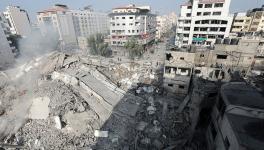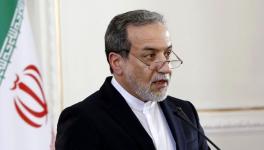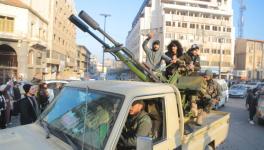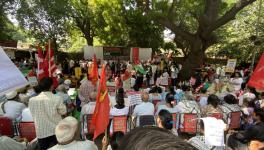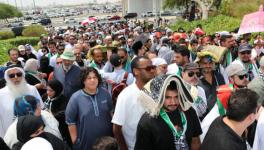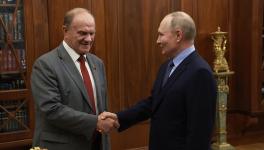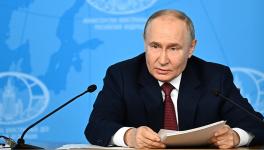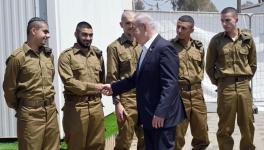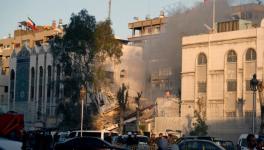In Iran, Despondency and Resilience Unite
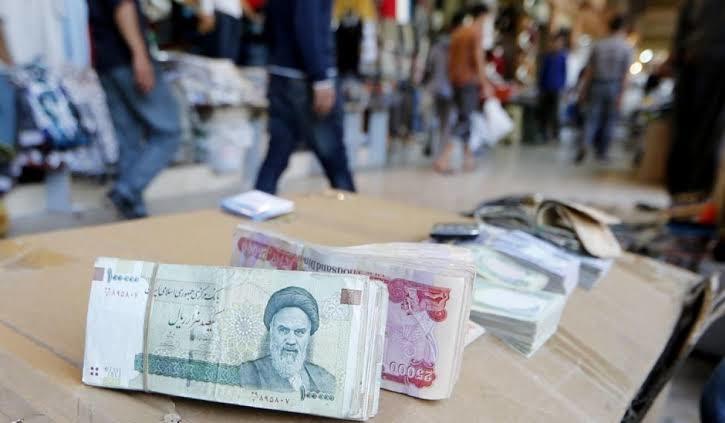
Image Used for Representational Purpose Only
A wave of protests swept across Iran in November, one visible after-effect of United States-imposed sanctions on the middle-eastern country since May 2019. The trigger was the rationing of petrol announced by the government and consequent leap in inflation. Both these effects of the sanctions are taking a heavy toll on Iran’s people.
There is mounting anger over essential items going out of reach as the sanctions have squeezed livelihoods, coupled with the pain of skyrocketing food and medicine costs. As the US continues to tighten trade restrictions, a growing number of Iranians are struggling to afford healthcare, food and fuel costs, while their government struggles to cater to the needs of its poorest sections.
“My father suffers from cancer. Due to American sanctions we cannot source the drugs we need from pharmacies. Now I have to buy them from the black market at triple the price,” says a 31-year-old travel guide who works in the ancient city of Shiraz, Iran’s fifth-largest city in its southwest Fars province.
Hundreds of miles north of Fars, in Tehran, Iran’s capital and one of Asia’s biggest cities, the struggle to survive is tougher with food prices sharply escalating under the restrictions imposed by the sanctions. At stores in Grand Bazaar, the city’s biggest market, a general apprehension is palpable. The shops overflow with saffron, date, pistachio. There is also clothing, crockery and other items in the stores, but customers are hard to find. Even tea shops and hookah bars, the traditional glue of Tehran’s social and cultural life, appear empty and forlorn.
The wallets of average Iranians that have emptied out during the recent phase of sanctions and the heightening war tensions are a dampener. The value of the Iranian Rial has dipped sharply against the dollar and other currencies.
“Prices of everything we need are rising every day. I am scared, I am worried; I often begin to cry by myself. That’s how desperate I feel,” says a young lady who works as an interpreter. Families in Tehran have reduced their meat and milk consumption, she says. Now they are cutting down on another staple—rice. “This is because the price of rice has shot up,” she says. Many Iranians consume rice of the Indian Basmati variety, and its prices have climbed three-fold lately. While rice is making its way up and out of reach, the Rial has plummeted, only to recover a little.
Every Iranian’s dream is to own a house in Tehran one day, but most cannot afford it. “More than a third of my income goes to pay the rent for my one-room tenement. The rest provides food for my family,” says the driver of a van in Teheran. Rental incomes are growing in the city, and salaries have risen too, but not in pace with the rising cost of food and rent. The country now has a major housing crisis; while the construction sector has seen negative effects of the sanctions too.
Since May, there has been tremendous stress on Iran’s economy. Amidst the crisis, the foreign minister Mohammad Javad Zarif—he was educated in the US and Iran—sums up the public mood: “There is a popular saying in the US: what does not kill you, will make you stronger,” he says.
Zarif does not shy away from admitting the damage to Iran’s economy from the sanctions. But many observers of Iran regard what he says about becoming stronger in the face of adversity as a fact. It is believed that Iranians have developed a kind of resilience to negotiate their long-lasting economic duress. Besides, there are few visible signs of distress: people are generally well-clothed and there is no beggary to be found on the streets.
For forty years, Iran has been under economic sanctions, and these, Zarif feels, have toughened his people. During the war with Iraq, which lasted eight years, Iranian cities were bombed. “We had no means to defend ourselves. The US prevented us from getting even the most primitive missiles. “Today, we have one of the most sophisticated missile systems in place. We have it because they wanted us not have it,” he says.
According to Zarif, Iran’s economy “suffered a psychological shock” because the sanctions were to come into effect from November, but the currency lost 70% of its value by June. “We have by now absorbed the psychological shock and our currency has regained 40% of its value,” he says.
Indeed, the Rial is regaining strength, but businesses have been hit hard and there’s little that signals recovery. Iran’s years of experience in dealing with sanctions is what keeps it going for the most part. According to the US, a network of companies conduct business on the government’s behalf. It is also believed that Iran has substantially increased sales of non-oil products to its neighbours, Iraq, Syria and Afghanistan. It is said that Iran is conducting a great deal of trade via Turkey. And after an initial dip following the imposition of sanctions in May, oil exports from Iran to China have climbed up substantially. But India, in order to please Trump, is not buying oil from Iran.
Zarif was upfront: “Iran will continue to sell oil and other countries will continue to buy oil, but the nature of this new business is such that it lacks transparency. One of the greatest victims of US coercive economic measures is transparency and one of the biggest gainers is corruption, because corrupt people will make a lot of money buying oil from us and selling it at a higher profit,” he says.
Around 400 km south of Tehran, the owner of a curio store outside the fabled Imam Mosque in Isfahan province, close to Iran’s geographic centre, rues the drop in international tourists. “Sure, we still have a large number of religious tourists, but we need people from all over the world to visit Iran,” he says.
The Iranian media has been reporting that many small factories and businesses were forced shut by the lack of raw materials and cash after May.
There was a brief interregnum in Iran’s international isolation after 2015, when western companies had re-entered Iran after sanctions had been lifted. Thereafter, incomes from oil, the economy’s chief driver, rose substantially until 2018. This economic optimism ended quickly. The next US president after Barack Obama, the incumbent Donald Trump, reintroduced the sanctions. The result has been limitations on food and medicine availability in Iran. Though these items have been excluded from the sanctions, companies selling high-end medical equipment do not wish to trade with Iran, fearing that other countries will boycott their goods. The other problem is that since Iran is facing a squeeze on its foreign currency reserves, they are not in a position to buy these items.
Zarif explains the situation: “To transact in food and medicine, we need to pass through banking systems. And, even if banks were allowed to carry on proceeds of medical transactions, how would we pay? They have put sanctions on everything. They have sanctioned oil, petrochemicals, fertiliser, manufactured goods—even the construction sector. We have to engage in trade in order to pay. They want to make us obey, but we will find ways of selling our goods. We will find ways to feed our people. Which country in its right mind will allow the US to succeed?”
The latest round of protests puts the government in a bind. For, it was proposed to increase the revenues from oil in order to raise funds to support the country’s poorest, whose circumstances are worsening quickly.
Tough and resilient Iranians are, but engaging with a wider cross-section of Iranian society leaves another impression: The sick and elderly are afraid they will be unable to afford life-saving drugs. Young men fear unemployment. Businessmen complain of raw material shortages. The struggle to make ends meet is getting tougher.
Medical doctors in Iran’s fifth-largest city by population, Shiraz, say the sanction on medical equipment and drugs is forcing the country to produce drugs indigenously. Dr Ali Malek Husseini, who heads the world’s largest liver transplant centre in the city, says that Iranian chemists have developed the capacity to locally manufacture drugs over the years. “Our liver and pancreatic transplants cost a tenth of what western hospitals,” he says. Not having radiation equipment to treat cancer patients has forced the radiologists to develop a local alternate as well.
In 2018, Iran sold Persian carpets worth well over $100 million to buyers in the US. But sales are dropping and the 2,500-year old craft, on which depend more than 1.5 million, are struggling to cope. Still, at Vakil Bazaar in the heart of Shiraz, the resilience of the local people stands out. A carpet-seller says, “The Persian carpet is woven by hand in villages across the country. We are finding it difficult to sell these items in the West.”
That is why ordinary Iranians fear a further drop in oil sales. Oil is the country’s main source of foreign exchange and the lubricant of its economy and sizeable welfare expenditure. Now there are apprehensions about coping with rising inflation.
All considered, Iran has not seen too many demonstrations over economic grievances, but the issue overhangs conversations nevertheless. As one housewife put it: “I just want to make sure that my children and family can grow up eating nutritious and healthy food.” Before these bread-and-butter issues, perhaps the talk about resilience will seem like mere rhetoric.
The author is a freelance journalist who spent a week in Iran as part of a media delegation. The views are personal.
Get the latest reports & analysis with people's perspective on Protests, movements & deep analytical videos, discussions of the current affairs in your Telegram app. Subscribe to NewsClick's Telegram channel & get Real-Time updates on stories, as they get published on our website.









